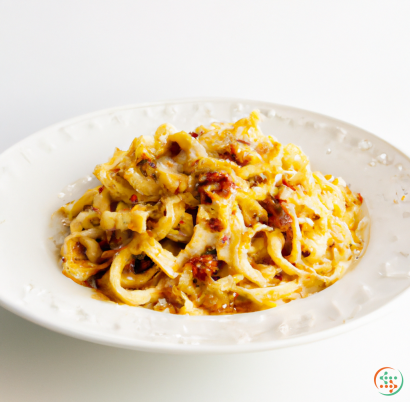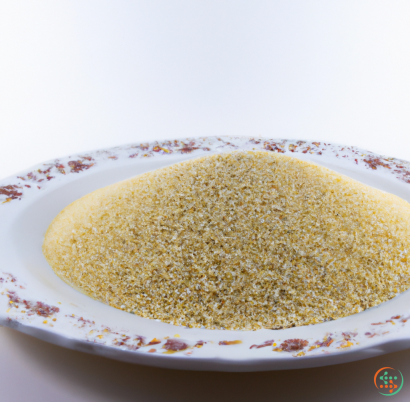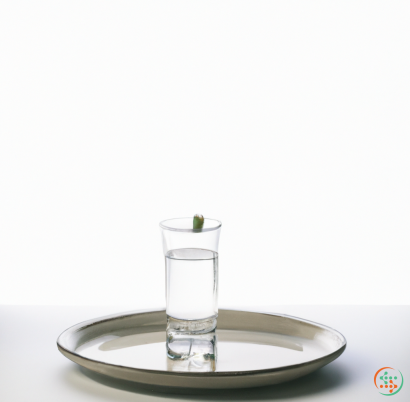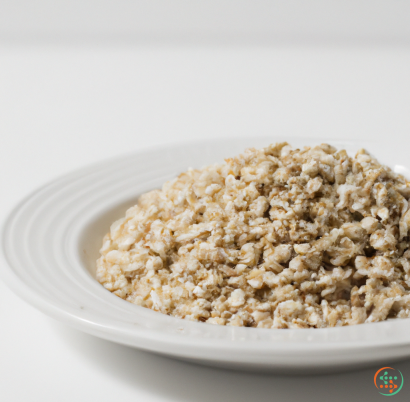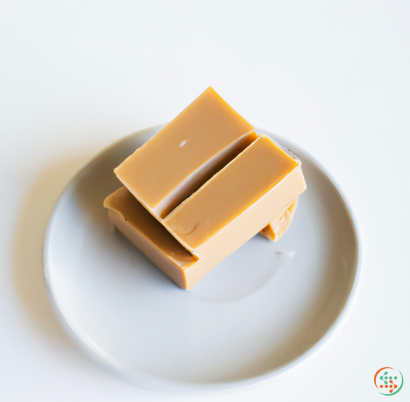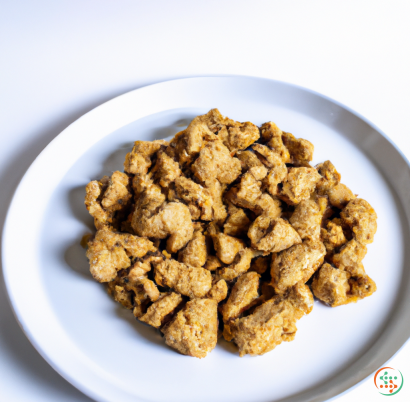Rice Flour
Rice Flour: A Gluten-Free, Versatile Alternative
Are you looking for an alternative to all-purpose flour that is gluten-free and easy to use? Rice flour might just be the solution. Rice flour is made from finely milled rice, most often white rice, and is a key ingredient in traditional Asian dishes. Despite its simplicity, this incredibly versatile ingredient has recently surged in popularity for use in gluten-free baking.
When substituting conventional white flour with rice flour, mixers should be aware of the differences in texture and flavor. All-purpose flour typically contains a high amount of gluten, which is responsible for that spongy texture and pleasantly chewy bite we all love in baked goods. In comparison, rice flour has a much lower gluten content, so it’s not ideal for producing that traditional structure. However, rice flour is a great choice for gluten-free baking, especially when paired with other gluten free flours. It can also be used to produce a lighter, drier product.
When baking with rice flour, it’s important to consider the purpose of the end product and adjust the recipe coconut. Baked goods created with rice flour tend to be extra crumbly and, without gluten, have a shorter shelf life. In this case, adding joy with a bit of almond, corn, or tapioca flour might help give the end product some stability.
It’s also important to note that there are quite a few varieties of rice flour available, each with its own flavor and texture characteristics. White rice flour is the most common variety, with distinct qualities; its very fine texture and slightly sweet flavor makes it ideal for adding subtle sweetness to baked goods. For this reason, it can also be added to batters to lighten them and make them crispy. Whereas brown rice flour has a slightly nutty taste and grainier texture that adds flavour, substance and moisture to batters. If you’re looking for an even richer flavor, consider trying a sweet rice flour that has undergone a steaming process prior to milling. This variety is ideal for giving baked goods a chewy, slightly sticky quality.
Making the switch to rice flour doesn't have to be hard and it's definitely worth experimenting with. Here are some simple tips and tricks for switching from all-purpose flour to rice flour:
• Start by substituting 25 percent of the all-purpose flour with an equal amount of rice flour.
• Add an additional 1 to 2 tablespoons of fat, like butter, to your dough or batter to help keep it moist.
• Take note that rice flour doesn’t brown in the same way that white flour does when baking. If you want a darker, more golden hue, you should lightly toast the dry ingredients.
• Adding either almond or tapioca flour to your recipes will help replace the gluten lost when substituting all-purpose or whole wheat flour with rice flour.
• Even though rice flour is naturally gluten-free, be sure to check the packaging and cross-contamination warnings.
In addition to baking, rice flour can be used for a variety of other cooking and baking tasks. It’s perfect for making roux in soups and sauces, dumplings and noodles, or as a coating for chicken and fish before frying. Rice flour is an incredibly versatile ingredient and it’s a great addition to any kitchen. With the right tips, tricks and recipes, you can easily take your dishes up a notch with a surprisingly simple substitution.
It is easy to take for granted the simple act of eating a meal, but each bite involves a intricate process that begins long before the food reaches your plate. In this blog post, we will be taking an in-depth look at the journey of rice flour from the source to the finished product served on your plate. Through discussing the harvesting, milling, separation, packing, and distribution of rice flour, readers will gain a greater appreciation for the sophisticated and complex process that leads to a incredibly simple and delicious dish.
Harvesting of Rice
Rice is one of the oldest and most widely consumed staple foods worldwide, providing over 20% of the world’s total calories and being a vital part of diets in almost every corner of the globe. The grains used to create rice flour, however, originate in the warm, wet climates of tropical and sub-tropical regions like South East Asia and the Middle East. Rice is made up of a husk, bran and endosperm, with the bran and endosperm containing the essential nutrients that makes it such a beneficial part of diets and allows flour to be created.
The harvesting process usually starts in late August, when the heads of the rice plants are cut with sickles or by hand. The entire plant is collected and placed in bundles, ready for threshing - which is the removal of the grains from the plants. Immediately after threshing, the rice grains are dried in the sun or under cover to reduce their moisture content. Once dry, the grains can be stored for consumption, or milled further to create flour.
Milling Process
The first part of the milling process is the removing of the husks, or the outer shells of the grains, to reveal the white endosperm. The husks, or hulls, can be mechanically stripped away using husking machines, also known as decorticators, with careful adjustments to ensure that the bran and germ, as well as some of the endosperm, is not removed. This resulting de-husked rice is known as brown rice, and can be used in its own right as a whole grain, or milled further to create rice flour.
From brown rice, flour is created by polishing, or grinding de-husked rice grains between metal rollers or stones. This process usually consists of two stages, starting with rough milling. During this stage, the rice and the endosperm are separated from the husk, resulting in an edible flour that still contains most of the endosperm particles and some protein, minerals, and vitamins. The second stage of milling involves the fine milling of the rough milled rice flour (or brown flour), which removes most of the endosperm particles and reduces the protein, minerals, and vitamins content further. This process eliminates most of the nutrition, but it also removes abrasive particles that could spoil the delicate flavour and texture of rice flour. The result is a highly consistent and finely ground white rice flour.
Separation and Packing
After the flour has been milled, it goes through a separation process to ensure any bran and germ that was not removed during the husking and milling process has been completely removed. The white flour then needs to be packed in air-tight containers or sealed bags to keep it fresh, as prolonged exposure to oxygen can turn the flour rancid and make it predisposed to insect infestation. The flour is usually packed in sealed 15kg sacks or paper bags to further reduce oxidation and retain the natural flavour, aroma and texture.
Distribution
Providing the flour has been stored in the correct conditions, it is now ready for distribution. Again, sacks and paper bags are the most common packaging, as they allow for safe transportation and transport of products. The sacks and paper bags are loaded onto trucks, trains, and boats, depending on the distance they are travelling, and the flour is delivered to grocers around the nation, or the world.
Once the flour arrives at its destination, it is usually offloaded and stored in warehouses or retail stores. Depending on the country, there may be additional steps that need to be taken to comply with government regulations regarding food items. The flours are then placed on shelves for purchase by consumers.
Conclusion
As you can see, the journey of a single grain of rice to a plate of delicious food is filled with science, interesting processes, and a complex global network for transportation. Rice flour is created by carefully harvesting, milling and separating the grains, then packing the flour in air-tight containers or sealed bags, so that it is free from contamination and ready for consumers around the globe. From a single grain of rice to your dinner plate, the journey of rice flour is vast and varied, but the result is always worth it.
| Vitamin E | 0.11 mg | |
| Vitamin B1 | 0.14 mg | |
| Vitamin B2 | 0.02 mg | |
| Vitamin B3 | 0.00259 grams | |
| Vitamin B4 | 0.0058 grams | |
| Vitamin B5 | 0.82 mg | |
| Vitamin B6 | 0.44 mg | |
| Vitamin B9 | 0.004 mg |
| Calcium | 0.01 grams |
Daily Value 1.3 g
|
| Iron | 0.35 mg |
Daily Value 0.018 g
|
| Magnesium | 0.035 grams |
Daily Value 0.4 g
|
| Phosphorus | 0.098 grams |
Daily Value 1.25 g
|
| Potassium | 0.076 grams |
Daily Value 4.7 g
|
| Zinc | 0.8 mg |
Daily Value 0.011 g
|
| Copper | 0.13 mg |
Daily Value 0.9 mg
|
| Manganese | 0.0012 grams |
Daily Value 0.0023 g
|
| Selenium | 0.0151 mg |
Daily Value 0.055 mg
|
| Tryptophan | 0.072 grams | |
| Threonine | 0.21 grams | |
| Isoleucine | 0.244 grams | |
| Leucine | 0.488 grams | |
| Lysine | 0.207 grams | |
| Methionine | 0.144 grams | |
| Cystine | 0.107 grams | |
| Phenylalanine | 0.317 grams | |
| Tyrosine | 0.314 grams | |
| Valine | 0.348 grams | |
| Arginine | 0.516 grams | |
| Histidine | 0.149 grams | |
| Alanine | 0.332 grams | |
| Aspartic Acid | 0.549 grams | |
| Glutamic Acid | 1.097 grams | |
| Glycine | 0.267 grams | |
| Proline | 0.278 grams | |
| Serine | 0.31 grams |
| Total Sugars | 0.1 grams |
per 100g
|
| Myristic acid (14:0) | 0.01 grams |
|
| Palmitic acid (16:0) | 0.35 grams |
|
| Stearic acid (18:0) | 0.03 grams |
|
| Total Saturated fatty acids: | 0.39 g | |
| Oleic acid (18:1) | 0.44 grams |
|
| Palmitoleic acid (16:1) | 0.01 grams |
|
| Total Monounsaturated fatty acids: | 0.45 g | |
| Linolenic acid (18:3) | 0.07 grams |
|
| Linoleic acid (18:2) | 0.31 grams |
|
| Total Polyunsaturated fatty acids: | 0.38 g | |

